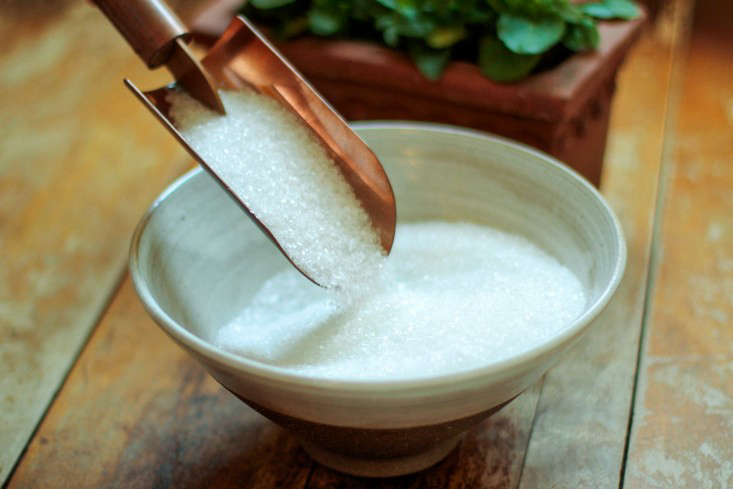Here in Half Moon Bay on the Northern California coast where I live and design gardens, I have to admit my garden—and my clients’—all stay pretty happy without much help. Well, they did anyway. Then came the California drought.
With water cutbacks, the plants drooped. And so did I, because after a long day of being outside digging in the dirt, I find that soaking in a hot bath (with a bath tea blend of herbs and Epsom salts) cured achy muscles and tired feet. But I was on the verge of giving up my hot soaks until I discovered a solution: recycling the bathwater (with diluted Epsom salts) in the garden.
Diluted Epsom salts are actually quite a fantastic fertilizer (offering a gentle dose of magnesium and sulfur to the soil). If you want to conserve water and give the garden a boost at the same time, follow these simple steps:
Photography by Rob Co for Gardenista.


I always suggest having a soil test done prior to fertilizing, but using diluted Epsom salts in water tends to be very gentle in any case. A good rule of thumb is to use 1.5 tablespoons of epsom salt in 1 gallon of water. I do this about every other week or so, circulating the water among my plants.

I also put some of the solution in a spray bottle and applied it to the new growth of vegetables, like my tomatoes, peppers, and beans. After a few weeks of this, I was amazed that my plants grew a lovely lush batch of green leaves—and the roses were covered in healthy buds. The tomatoes matured much stronger than past years, with zero rot or weak stems. My peppers were sweeter and produced about a month longer then normal. I’m sure the extra heat helped, but I found that using Epsom salts in the garden has been a wonderful addition to my yearly organic arsenal.


For more recycled fertilizer tips, see:
- Gardening 101: How to Use Eggshells in the Garden
- Gardening 101: How to Use Coffee Grounds in the Garden
- Homemade Garden Remedies: 5 Natural Solutions for Healthier Soil and Plants








Have a Question or Comment About This Post?
Join the conversation